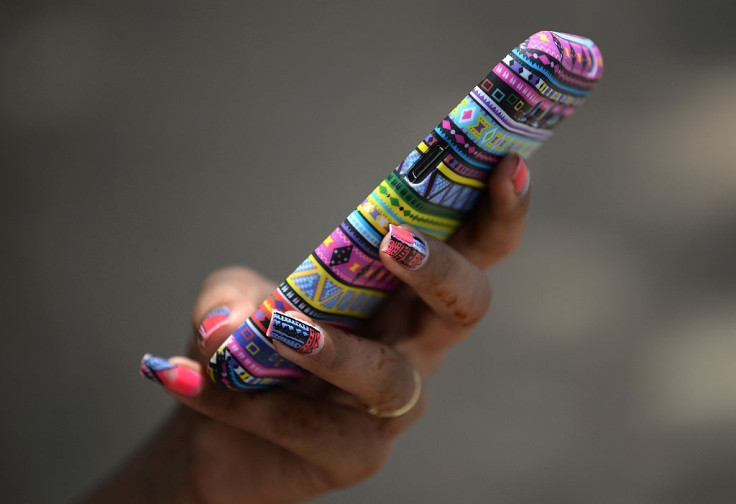The Dating Game: Open Body Language Improves Perceived Physical Attraction In Speed And Online Dating

First dates and initial online dating exchanges can be filled with tongue ties, awkward silences, and delayed text messages. Deciding if someone is attractive takes about 1.5 to 4 minutes, which is barely enough time for us to say hello and introduce ourselves. So, how do we put our best foot forward without talking too much or not talking at all?
In a recent study, psychologists at the University of California, Berkeley, have found open body language, such as uncrossed limbs or a stretched torso, can boost our appeal to potential romantic partners in speed dating and online dating profiles.
“We do know from past research that having an open posture communicates a lot. Confidence, high self-esteem, being open, and being relaxed. Doing this over the course of a date can be beneficial,” Tanya Vacharkulksemsuk, lead author of the study and a post-doctoral research fellow at UC Berkeley, told Medical Daily.
This prompted Vacharkulksemsuk and her colleagues to observe whether open, expansive postures would lead to more "yeses" when it comes to meeting for a second date in speed and online dating situations.
In the first experiment, researchers analyzed nonverbal body language interactions, along with nonverbal cues of affiliation (e.g, smiles, laughs, head nods) among 144 female-male speed-dates which lasted 4 minutes. After each date, participants would rate their date and indicate whether they would like to see the person again. They found an open, expansive nonverbal pose expressed during the date significantly predicted the odds of getting a "yes" response. Nonverbal affiliative behaviors did not show the same effects.
Holly Parker, a Harvard lecturer on the psychology of close relationships and a psychotherapist, believes this positive body language, such as an expansive posture, signals that we’re interested in the person. It’s also possible that when we adopt this body pose, we “increase our date’s comfort level and tendency to respond positively toward us, which could increase our attraction,” Parker told Medical Daily.
Similarly, the researchers conducted a second experiment to test whether these nonverbal cues were successful in an online dating setting. They launched 12 profiles, half of men and half of women, in a dating application showing the individuals posed in both expansive and contractive stances (e.g., arms folded, looking away, looking down). The number of "yes" responses were received for each profile type per a 48-hour period with each profile having the potential of getting up to 250 "yes" responses over the period. This results in a total sample size of 3,000 potential yes responses across all target profiles.
Anecdotally when people use these apps, they are far more likely to make snap “yes” or “no” judgments about potential partners, according to Vacharkulksemsuk. Information gathered over weeks and months of courtship is now obtained in mere minutes or seconds.
The researchers found online dating profiles featuring photos depicting expansive body posture were 27 percent more likely to elicit a “yes” response. Although open postures increased “yes” responses for both genders, they were more effective in garnering a match for men than for women. The researchers followed up to see whether perceived dominance was a mechanism that boosted attraction to this pose. Overall, the expansive photos were rated as more dominant than the others.
It’s suspected males in this dominant pose were more likely to have access to physical and social resources and a willingness to share those resources. An expansive pose can covey social dominance, where an individual stands in the social hierarchy, and how many physical and social resources they have,
Vacharkulksemsuk believes females prefer this in a potential romantic partner. For example, the online dating app user could think “I like this certain quality in someone and I want to partake in that, such as physical resources, like money, and social resources, like being part of a dense social network.
This shows “traditional resources very desirable,” said Vacharkulksemsuk.
Nevertheless, women’s expansive postures positively predicted men's attraction in both studies. Men were attracted to women with open body language. This comes in contrast to the current widely held assumption that social and economic status is important only to women. It seems men are finding these traits desirable in a potential mate as well.
This adds to the scientific literature of the effects of positive body language on perceived attractiveness. A 2007 study found keeping our torso open towards others is the best way to show that we’re available and interested. Crossing our arms or holding our phones in front of our chest while checking them makes us appear guarded. We also are less likely to trust those whose hands are not held in a position that we can see.
Subtle, but powerful nonverbal cues in modern, fast-paced dating situations are something we can control. With 91 million people across the world finding love via mobile apps today, how you stand could be crucial. It’s not easy to change our eye color, but it is simple to maintain an open, outward appearance using subtle body language.
“It's a very exciting time to be researching with what we know how humans think and feel in these specific contexts of dating we see these days. This is very different from what dating used to be,” said Vacharkulksemsuk.
After all, it seems our posture speaks much louder than words.
Source: Vacharkulksemsuk T, Reit E, Khambatta P et al. Dominant, open nonverbal displays are attractive at zero-acquaintance. PNAS. 2016.



























